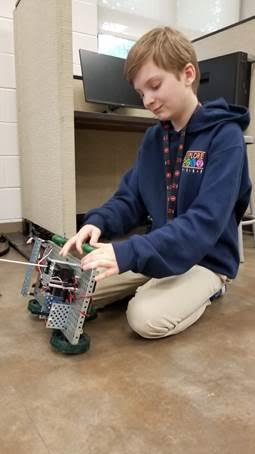We began our actual trip on Christmas, when we woke up in the Old Cataract hotel,. The hotel is located in Aswan, by the Nile. It has an amazing view of some ancient Egyptian ruins. The first thing we did after breakfast was to visit a Nubian village named Anakato, which we reached by boat. The village, which is built in the Nubian architectural style, with bright walls and domed buildings, is full of merchants peddling their wares, including knives with crocodile-skin sheaths (one of which I bought). Camels walk, trot, canter, and occasionally gallop through the village. We visited a place with crocodiles, named Malka House. We saw the larger crocodiles and held some of the smaller ones. After wandering through the village and buying some things at the souk, or market, we went on a camel ride to the hill for sandboarding, pretty much snowboarding on sand. We then left the village, to go back to the hotel. After lunch/dinner (Arabic countries eat lunch at 4:00 or later), we left on yet another boat to go see the temple at Philae.
The next day we boarded our cruise from Aswan to Luxor. The ship, named the Minerva, was fairly big, and had a ‘pool’. Note the quotes around the word ‘pool’, as the pool was tiny, with most of the expanse being only a few inches deep and the rectangle that was left being 155 centimeters, though it was not large. Ending the rant about the pool, the other thing we did today was to visit the Philae temple again, this time in the daylight. It was much better, as we could see where we were going and the temple in all its grandeur. Next we visited the High Dam, which prevented the Nile’s flooding, created Lake Nasser (which is one of the largest man-made lakes in the world), and provided energy to most of Egypt. The dam was built in such a manner so that the stone will not break in the event of an earthquake. More than Philae can say, as it was ravaged by several earthquakes. Another interesting fact – all the crocodiles were stuck in Lake Nasser after the construction of the dam, and cannot return to the Nile.
After returning to the ship, we ate dinner, though we had been warned not to eat the fresh fruit/veggies, swallow the shower water, and to brush our teeth with bottled water. Why? The ship gets its water from a store of water, which is not the cleanest water. The same water is used to wash fruits and vegetables, so many people fall sick on Nile cruises.
The day after that, we visited Kom Ombo Temple, an old temple that was built during Ptolemaic times. The temple was dedicated to two gods, Sobek and Hathor. Some sections of the temple still have color, which makes them incredible to see. We also visited the crocodile museum, which showed the mummified crocodiles that were offered to Sobek, a crocodile god. Some mummified eggs were shown, and the crocodile skeletons were visible. Once we had left the mummies, we chanced upon a man with cobras. We asked to play with them, and he said yes. I held the record, with one cobra on my head, one in each hand, and one on the ground to play with. We returned to the boat and went to Edfu. It was pretty much a larger version of Philae, though some colors were visible, and it was built during the pharaonic, not Ptolemaic, period. Edfu was the third-largest monument in Egypt – excluding pyramids – the largest being Karnak, which we would visit when we arrived in Luxor the next day.
In Luxor, the boat moored directly in front of Luxor Temple, so we had a great view of it. We woke up way too early in the morning to visit the Valley of the Kings. The first, and in my opinion most impressive, was that of Rameses VI. The tomb had retained most of its color, and we saw some paintings that were layered directly on the walls, without carving. Some areas of the ceiling were painted like the night sky. The second most memorable tomb was that of King Tutankhamun. It was smaller than I had expected, but his unwrapped body was on display and the paintings were intact. We visited some more tombs, but those were the most memorable, besides one so far underground that it took five minutes to reach the surface.
We then left the tombs to visit Hatshepsut Temple. It was large and detailed, but mostly destroyed, as Thutmoses III had not wanted his aunt remembered as a ruler. After returning to the cruise for lunch, we went to Karnak. The model on display showed the true scale of the ruined temple. It was enormous, with a columned hall that had over a hundred pillars that ranged from 14-21 meters high, and as thick around as redwoods. We admired Karnak, then returned to the boat and therefore ended our trip.








